State of the (campus) art
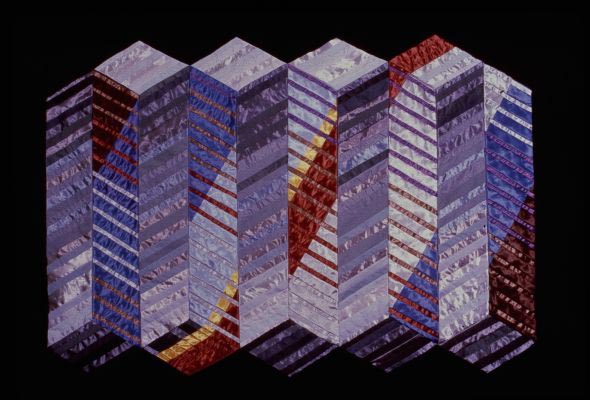
Joyce Carey’s Refractions (1987) is among the holdings available for public display in the collection of the Campus Art Exchange.
The Campus Art Exchange collection has been decades in the making.
Many of the nearly 200 pieces had been out of sight, kept in closets and corridors after remodeling jobs or the passage of time and tastes that left the artwork out of the picture.
But art is made to be seen.
The forgotten art is available for public display at little to no cost, thanks to the resourceful Campus Art Exchange program that began in 2017. UW–Madison buildings and departments are eligible. Artwork must be hung in public spaces such as hallways, common areas, conference rooms or other gathering spaces — not private offices.
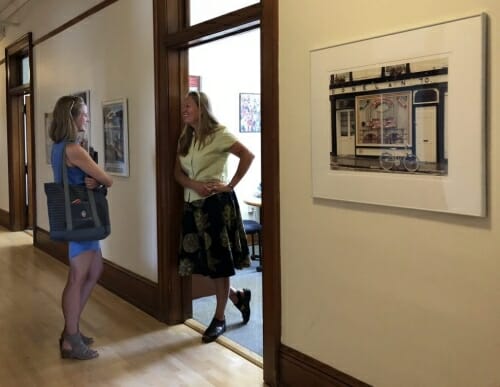
The Art Exchange worked with the International Division in Bascom Hall to install a variety of artworks representing the many faces of the UW community. Photo courtesy of Campus Art Exchange
New pieces from UW–Madison students and professionals are being purchased for the collection and can be seen at the first Art Exchange Exhibition Aug. 2 through Sept. 13 at Union South’s Gallery 1308 with the help of the Wisconsin Union Directorate Art Committee. An opening reception will be held from 6 to 7 p.m. Aug. 2.
A sneak peek can be seen on the Art Exchange’s website. Of the 40 pieces, 13 are by students.
The canvas for the idea was blank until campus art was inventoried six years ago, using a grant from the Brittingham Fund. It included art in academic settings that was outside the formal collections at the Chazen Museum of Art, Wisconsin Union, or the UW Hospital and Clinics Authority.
This was no small task. It had been decades since any kind of inventory was done. The last semi-formal record was a handwritten inventory recorded in 1968 on 3”x5” notecards.
The art treasure hunt was led by Daniel Einstein, historic and cultural resources manager for UW–Madison’s Division of Facilities Planning and Management, in collaboration with Cortney Anderson Kramer, a PhD candidate in art history. Often, building managers would have to show them where the art was. There had been more than a few changes since 1968.
If there were a theme, it would be randomness. The collection is always changing, thanks to donations, additional discoveries and the newly acquired works by students.
While making the rounds, Einstein was often asked about how they could get new art for their buildings but on a budget of zero dollars.
“That challenge percolated for a number of years,” Einstein says. “On one hand, we have art that people don’t want and on the other hand we have people who want art but don’t have funds to acquire it.”
The solution was all over campus. A gallery of available art can be found on the Art Exchange website.
If there were a theme, it would be randomness. The collection is always changing, thanks to donations, additional discoveries and the newly acquired works by students.
You can get an original oil painting of a landscape by Midwestern artist Frederic Tellander (1878-1977).
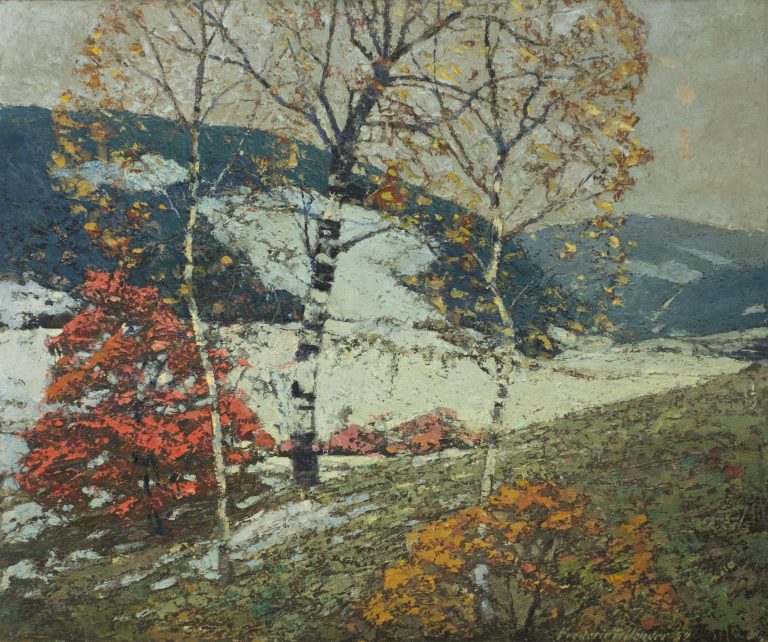
Untitled by Frederic Tellander (1959)
There are also pictures of iconic campus places, like Bascom Hall and the UW Horse Barn.
Bird lovers, you’re in luck. Trumpeter swans, ivory-billed woodpeckers and pin-tailed ducks await your walls.
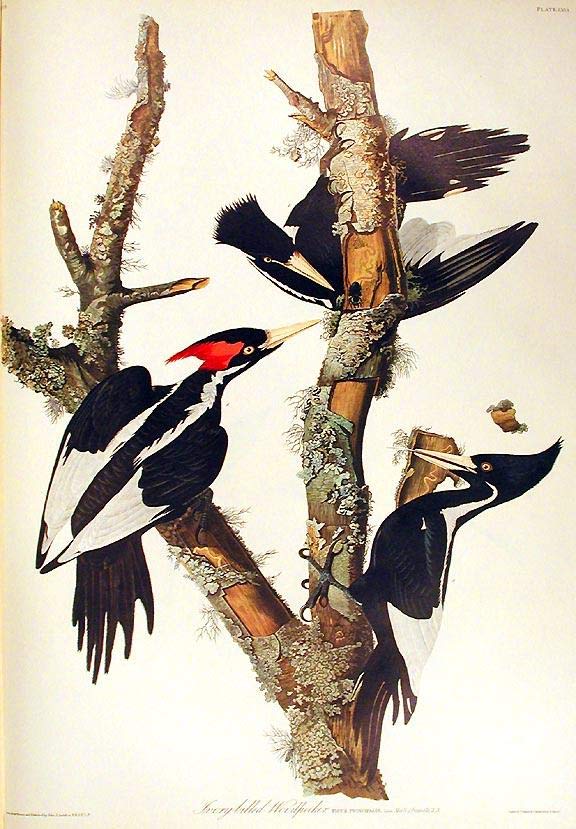
Ivory-billed Woodpecker by J.J. Audubon
Perhaps your taste is a bit more abstract. The Kohler Foundation donated 19 pieces from Kenn Kwint, a Milwaukee artist known for over-sized abstract canvases, prints, paintings of abstract figures and portraits. His work has been exhibited at the Art Institute of Chicago, the Walker Art Center in Minneapolis and the Milwaukee Art Museum. “Where They Held Cock Fights,” a 39” x 29” Conte crayon and watercolor on paper, and “Fronts,” a 3” x 5.75″ acrylic on paper, are among the pieces awaiting a home.
Some may view art as a luxury. Kramer thinks it shouldn’t be.
“It’s a part of what makes us human, isn’t it? It’s part of what makes us us,” she says. “It changes the way we feel in the space, having a positive work environment surrounded by things that are inspiring or calming. Art affects how we think and how we feel.”
While initially focused on original works of art, Kramer and Einstein expanded their artistic vision to include reproductions.
“What we have found is that sometimes the posters are a really nice way to spruce up a hall or add a little color to a space,” Kramer says.
“Art can bring both functionality and beauty to everyday lives, and it’s important to find ways to intertwine art within the campus community.”
Kara Morris
Recipients of artwork include the Office of Strategic Consulting, International Division in Bascom Hall and the Research Animal Resource Center.
The addition of contemporary pieces by students is a way to showcase up-and-coming artists while freshening up the collection.
“Some of my favorites are the student pieces,” says Laura Grotjan, a UW art history doctoral student who has taken over for Kramer as the Art Exchange manager.
A call for artwork was put out last spring. Grotjan says there will be another call for submissions in the fall. Student work is purchased by the Art Exchange, thanks to the Brittingham Fund. All of the student pieces will be available for loan after the exhibit ends.
“It’s a great way to support art students,” Grotjan says. “Now their piece is owned by a permanent collection, which is a good resume booster for them.”
Kara Morris, a senior from Minocqua, Wisconsin, majoring in graphic design and painting, created “Pier Pressure” for the show. It’s the first piece of her art that she’s sold.
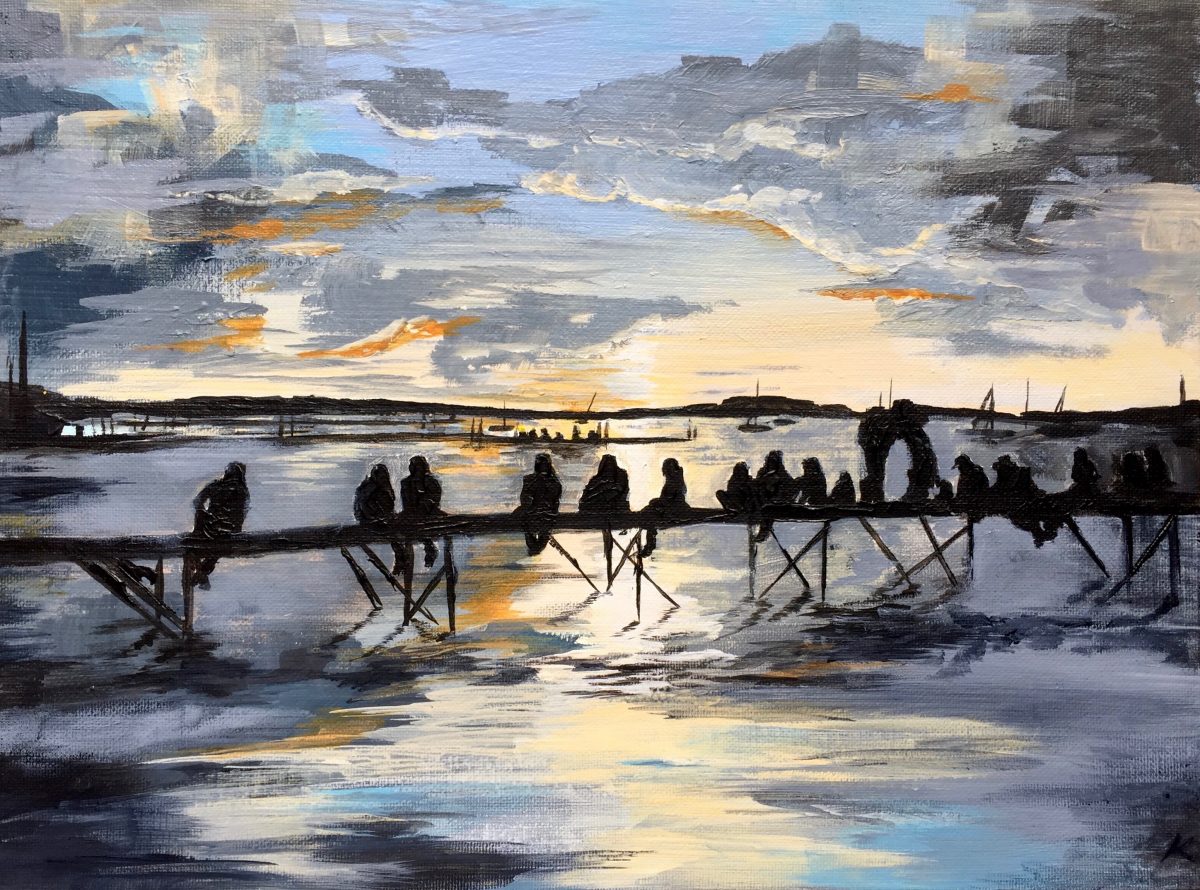
Pier Pressure by Kara Morris
“It is fulfilling knowing my piece is valued for the contribution it will make as part of the collection of student works,” Morris says. “It makes me feel like I was able to contribute something to the campus in the long term, and I hope that this piece brings light to the area in which it is placed.”
Morris think it’s especially important to place art outside of traditional areas like museums.
“Art can bring both functionality and beauty to everyday lives, and it’s important to find ways to intertwine art within the campus community,” she says. “This type of integration enables students and faculty to work in welcoming environments, which shows the positive impact art can make within a space.”
If you’re looking to acquire a piece for your campus space, you can visit the online gallery. The request is reviewed and a visit to the artwork’s potential new home is made. Kramer recommends talking with colleagues about the kind of artwork they think is best suited for their work area. Some areas on campus are in search of something energetic and lively. Others seek calm and serenity.
Maybe there’s a piece in your area that you think has been suitably appreciated that you’d like to share. They’ll gladly take a look.
“We have many different sized pieces featuring a wide variety of themes,” Grotjan says. “The fun thing is working with people to figure out what would look good in their space.”
